People, who love dogs and food, listen up! Are you sick of looking all over the internet for safe and healthy ways to treat your pets? Don’t look any further; we’ve put together a list of 7 surprising trends in human food that are not only safe but also very good for your dog.
You are about to find a huge range of tasty and healthy foods that will keep your pets happy and their taste buds begging for more. Come with us as we share these fun tips that will give you a new way to think about feeding your pets. With these surprising trends, you and your dog can now eat together in a way that is both healthy and paw-some.
What You Need to Know About Dog and Human Food Trends
- What You Need to Know About Dog and Human Food Trends
It’s been thousands of years since people first lived with dogs, and the bond between them has grown stronger over time. Dogs have changed their roles in our lives from working animals to beloved family members. We really care about our pet friends and want to give them the best care and food possible because of this.
Because we have a dog, we are always looking for ways to make his health and food better. In recent years, there has been a clear shift toward feeding dogs food that people eat. Although some might think this is strange or even dangerous, there are some trends in human food that are surprisingly safe and good for our dogs.
We will talk about some of these surprising trends in human food and how they can be good for your dog’s health in this part.
- How Dog Food Has Changed Over Time
Before we talk about specific changes in human food for dogs, it’s important to know how dog diets have changed over time. Traditionally, dogs were fed meat-based diets that mostly included leftovers from their owners’ meals or live animal goods that they found in the wild.
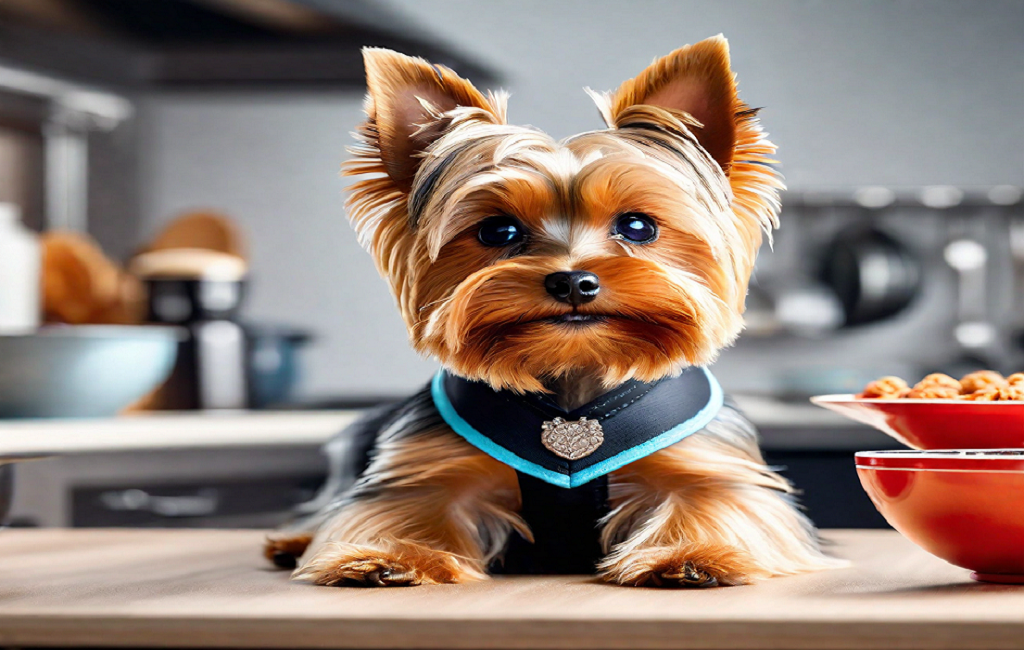
But as society became more modern, industrial dog foods became popular. These foods were easy to get and cheap, but they often lacked important nutrients for good health. Some dogs got sicker because of this, like getting fat and having stomach problems.
As a result of this change, many dog owners started to look beyond the usual commercial dog food and consider other foods that might be better for their dogs’ health.
- Why adding human foods to a dog’s diet is a good idea
As the need for healthy and more natural dog food grows, it has become easier to add trends in human food to dogs’ meals. Dogs can’t eat all human foods, but there are some foods and ingredients that are good for them and can help their health in many ways.
For instance, some fruits and veggies are very high in fiber, vitamins, and antioxidants that can help a dog’s immunity and digestive systems. Lean meats and fish, among other human foods, are good sources of energy that can help dogs keep their muscles and bones strong.
- Trends in human food that are safe for dogs
Before making any big changes to your dog’s diet, you should always talk to your vet first. Here are some current trends in human food that are usually safe for dogs:
– Coconut oil: This healthy fat has many benefits for dogs, such as helping them digest food better, keeping their coats healthy, and maybe even protecting them from viruses and germs.
– Bone broth: Bone broth is full of nutrients like collagen that can help keep joints healthy, improve digestion, and give dogs a shiny coat.
For dogs, especially those who have stomach problems, pumpkin is a healthy food to add because it is low in calories and high in fiber, potassium, beta-carotene, and vitamins.
– Blueberries: These berries are full of phytochemicals, antioxidants, vitamins A and C, and fiber, all of which may help dogs’ brains work better.
– Fermented foods: Foods like kefir and kimchi that are high in probiotics can help dogs have a healthy gut microbiome and immune health generally.
- Why dog food trends can be bad for them
When you feed your dog human food, it’s important to be aware of the possible risks, just like when you feed them any other food. Some things that are okay for people can be bad for dogs or even poisonous. For instance, dogs can lose their kidneys if they eat certain foods like figs and grapes.
Also, some trends in human food might not have the right mix of nutrients for a dog’s specific needs. Prior to making major changes to your dog’s food, you should carefully read up on the subject and talk to a vet.
- Conclusion
We pet owners only want the best for our furry friends, and that includes what they eat. By feeding our dogs trendy human foods, we can improve their nutrition, boost their immune systems, and improve their general health. But it’s important to do a lot of study, talk to a vet, and make sure that any changes you make to your dog’s food are safe and right for their needs.
Figuring out what foods people eat are safe for dogs
When it comes to feeding our pets, it can be tempting to give them some of our favorite foods. On the other hand, dogs shouldn’t eat all human food. Some ingredients can be dangerous or even deadly.
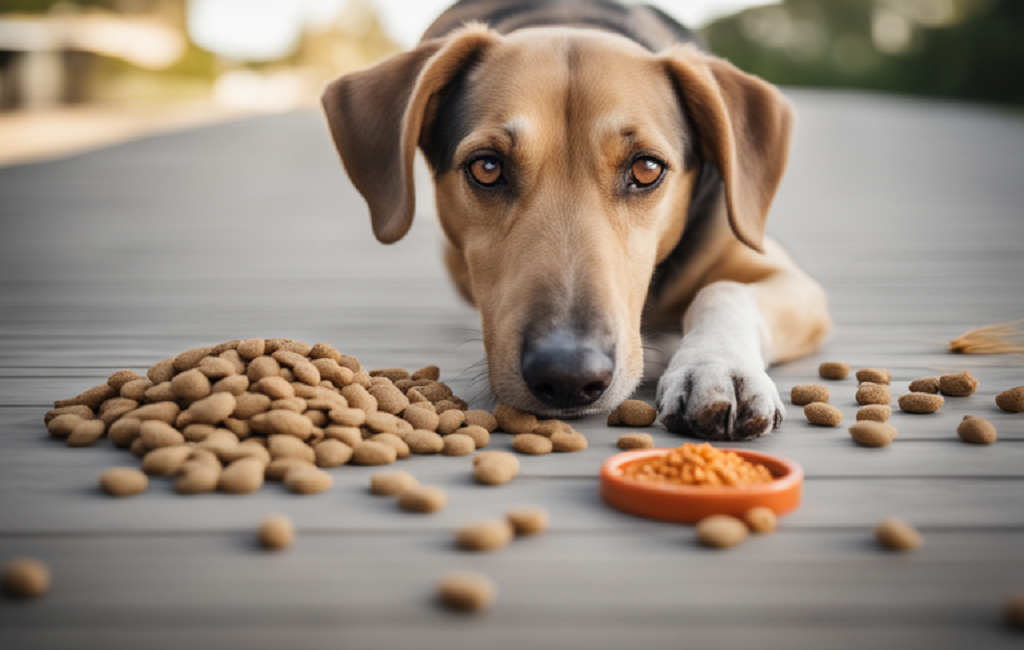
To make sure you’re giving your dog a healthy, well-balanced diet, you should know which human foods are safe for them to eat. People often eat the following things, which are safe and good for your dog:
- Lean Meat: Dogs need nutrition from animal sources because they are omnivores. Lean foods for dogs, like chicken, turkey, and lean cuts of beef or pork, give them amino acids and nutrients they need to stay healthy.
- Eggs, cooked: Eggs are another great food for dogs that are high in protein. Raw or cooked eggs are fine to feed them, but cooked eggs are better for getting the nutrients into their bodies.
- Brown Rice: Dogs can easily process brown rice, which is different from wheat and other grains. It also has a lot of carbs, which are good for them.
- Fruits: Since many fruits are naturally sweet and don’t have any added sweeteners like xylitol that are bad for dogs, they make great treats for them. Bananas, apples (without the seeds), blueberries, strawberries, and tomatoes are all foods that you should eat.
- Vegetables: Dogs should also eat vegetables because they are good for them and give them vitamins and minerals. You can eat green veggies like broccoli, spinach, kale, and carrots.
It is important to remember that dogs shouldn’t eat everything that people eat. Some things can even be harmful. Sometimes people give their dogs things that they shouldn’t have:
- Grapes and Raisins: Grapes and raisins can kill a dog’s kidneys, even in small amounts.
- Chocolate: Theobromine, which is found in chocolate, is poisonous to dogs and can make them vomit, have diarrhea, have seizures, or even die.
- Onions and garlic: Compounds in these veggies can hurt a dog’s red blood cells, which can cause anemia.
- Booze: Dogs are much more sensitive to booze than people are, and even a small amount can kill them.
- Avocado: Avocados have a chemical called persin that is poisonous to dogs and can make them vomit and have diarrhea.
Along with keeping your dog away from these possibly dangerous things, it’s important to keep an eye on their weight and change how much they eat as needed. Dogs that are too fat can get joint pain, diabetes, heart disease, and other health problems.
Before making any changes to your dog’s diet, you should always talk to your vet first if you have any questions about what human foods are safe or good for them.
By knowing which human foods are safe for dogs and giving them those foods in small amounts, you can give your furry friend a wide range of tasty and healthy foods that will keep them happy and healthy.
What are the pros of feeding your dog human foods?
Adding human foods to dogs’ diets has become more popular over the past few years. A lot of people think that giving their dog human food is bad for them or even dangerous, but there are some good things about giving your dog some human food.
- Better nutritional value
One of the main reasons people feed their dogs human things is because they are better for them nutritionally. A lot of commercial dog foods may not have enough important nutrients and may be highly prepared, which makes them less healthy than whole, raw human foods. You can be sure that your dog is getting all the vitamins and minerals it needs for good health by giving it some human foods.
- Different tastes and textures
There’s no doubt that our pets can get bored with eating the same food every day. Dogs like having a range of foods, just like people do. Adding some human food to your dog’s food can give it new tastes and textures that they will enjoy. This might make them enjoy their food more by stimulating their taste buds.
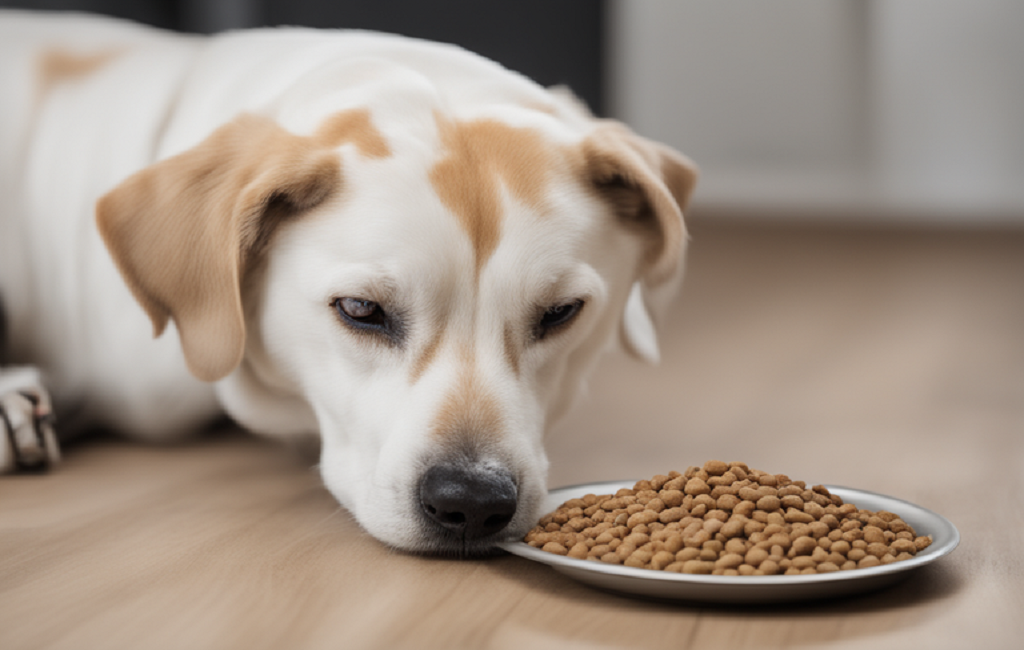
- Treats That Are Better for You
Many dog treats you can buy at the store are high in calories and full of fake ingredients and chemicals. If you use certain kinds of human food as treats instead, you can give your dog healthy options while still giving them a tasty lunch.
- Option that saves money
You won’t believe it, but giving your dog safe, healthy human food can save you money throughout the years. You can control the amount of food given and choose cheaper items when you make meals at home with human food. This may be better for your budget than buying commercial dog food all the time.
- Better Control of Quality
You put a lot of trust in the company that makes commercial dog food when you give it to your dog. Almost all businesses have strong rules for quality control, but cat food has been recalled and tainted in the past. You have more control over the quality and safety of your dog’s food if you make some of their meals with food that people eat.
How to Safely Add Human Foods
There are many good reasons to feed your dog human foods, but it is very important to do so safely. Dogs shouldn’t eat everything people eat, and some things can even be poisonous. If you want to feed your dog something new, make sure you find out if it’s safe for dogs or talk to your vet.
Also, remember that every dog is different and may have different food needs or limits depending on its age, breed, weight, and health. Before making any big changes to your dog’s food, you should always talk to a vet first.
According to the study, giving your dog some human foods can improve their health and give their meals more variety. Obviously, you should do this safely and with the help of your doctor.
Seven surprising food trends for people that are safe and good for dogs:
This is becoming more and more common among dog owners these days: feeding their dogs human food. Although it is important for dogs to eat a healthy, well-balanced diet, there are some things that people eat that can actually be good for their health. This part will talk about some surprising trends in human food that are safe and good for your dog.
-
Oil from coconut
People who care about their health are using coconut oil more and more, and it turns out that dogs can also benefit from it in many ways. There are a lot of medium-chain fatty acids in this natural oil. These acids have been linked to better digestion, immune function, and even weight loss in dogs. It can also help your dog’s skin and coat stay healthy if you put it on them or put it in their food.
-
Broth of bones
People are starting to think of bone broth as a treat because it is full of nutrients and can heal. We’re lucky that these perks also apply to our dogs. Bone broth is made by boiling chicken or beef bones with water and possible veggies for a long time. This makes a nutrient-dense drink that is easy for both people and dogs to digest. It has important amino acids, collagen, glucosamine, chondroitin sulfate, and other chemicals that are good for your joints, stomach, and immune system.
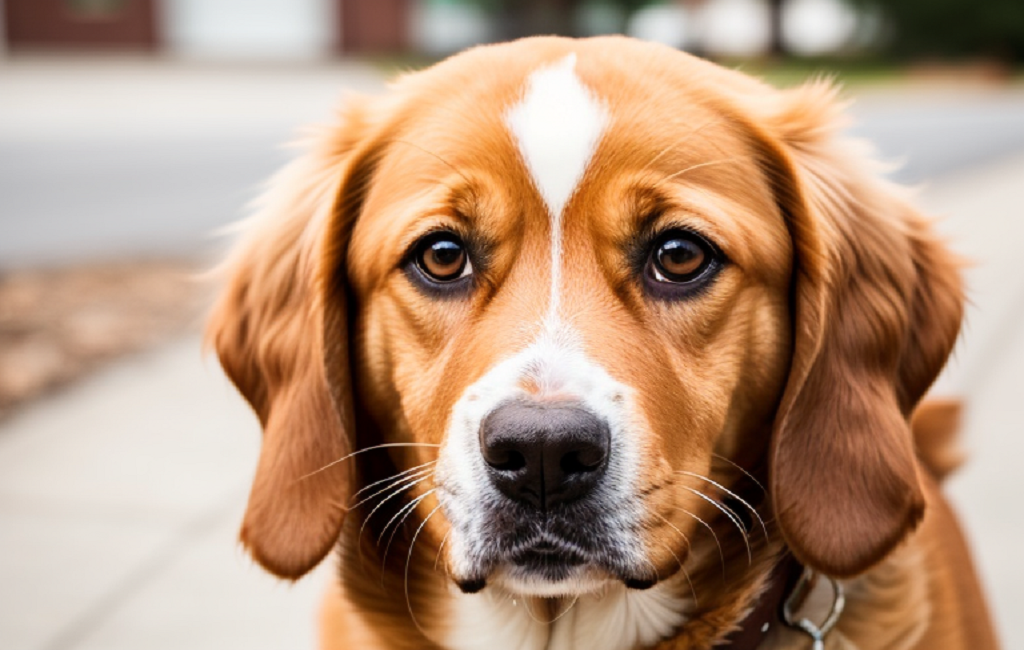
-
Carrot Pumpkin
Because it has a lot of fiber, pumpkin has been known for a long time to help people and animals digest food. If your dog is having trouble going to the bathroom, adding a little pureed pumpkin (not pumpkin pie filling) to their food can help them go more regularly and ease their diarrhea or constipation. Beta-carotene and vitamins A, C, and E can be found in large amounts.
-
Seeds of hemp
Hemp seeds are becoming more popular as a superfood for people, but they can also be very good for dogs’ health in many ways. These tiny seeds are full of protein, omega-3 fatty acids, and other important nutrients that help dogs keep their skin, coat, and immune system healthy. You can give them to your dog as a treat or add them to their food.
-
Fermented milk
Kefir is a drink made from soured milk that has enzymes and bacteria that are good for you. Some dogs may have problems processing dairy products, but most dogs can handle kefir because it has a low lactose level. When given in moderation, it can help dogs process food better, boost their immune systems, and get healthier skin and hair.
-
Fish called sardines
Sardines are a great way for both people and dogs to get energy and omega-3 fatty acids. These tiny fish are one of the best places to get omega-3s, which have been linked to better heart health, joint health, and brain health in dogs. Be sure to pick sardines that are packed in water and don’t have any spices or salt added to them.
-
Berries blue
Berries like blueberries are very healthy for both people and dogs because they are full of antioxidants and vitamins. They have a lot of phytochemicals, fiber, and vitamin C, all of which are good for your brain, eyes, and immune system. When given in small amounts as a treat or on top of their food, blueberries are also a tasty and healthy addition to any dog’s diet.
It is important to remember that these trends in human food can be good for your dog in small amounts, but they shouldn’t be fed instead of a healthy, full dog food diet. Before changing your dog’s diet or adding new things to their meals, you should always talk to your vet first.
The avocado
In recent years, avocados have become a popular “superfood” for people. But did you know that they can also be good for your dog’s health? Even though avocados are safe for dogs to eat, there are a few things you should know before giving this food to your pet.
That being said, it is very important that you only give your dog the meat of the avocado and not the skin or pit. The pit has something in it called persin that can be harmful to dogs if they eat a lot of it. The skin may also contain pesticides that could be dangerous to your dog and could cause them to choke.
Now for the good stuff: how do bananas help your dog’s health? Monounsaturated fat, which is found in large amounts in avocados, is known to be good for your heart. In both people and dogs, these good fats can help lower cholesterol and lower the risk of heart disease. But it’s important not to go overboard, since giving dogs too much fat can make them fat.

Avos are full of healthy fats and vitamins and minerals like vitamin C, E, B6, potassium, folate, and niacin. All of these are important for dogs’ health and well-being. Their immune system gets stronger and their skin and hair stay healthy thanks to these nutrients.
There is also a lot of fiber in avocados, which helps digestion and keeps dogs’ bowel movements regular. This can help older dogs or dogs that have stomach problems the most.
Even though dogs can benefit from avocados in many ways, it’s important to remember that they should only be given in small amounts as part of a healthy diet. When giving your dog a new food, like avocado, it’s best to do it slowly and watch for any signs of allergies or other problems.
Overall, if you feed your dog avocados in small amounts and make sure they are cooked correctly, they can be a tasty and healthy addition to their food or treats. Before you change your dog’s food, you should always talk to your vet first, and you should never give them an avocado pit or skin.
Oil from coconut
Over the past few years, coconut oil has become more common for both people and dogs. This natural, flexible product is good for your dog’s health in many ways and is easy to add to his food. This part will talk about the odd trend of using coconut oil in dog food, as well as its safety and health benefits.
What is oil from coconut?
Coconut oil is an oil that can be eaten. It is made from the meat or seed of a grown coconut. Since it’s mostly made up of fatty fats, it stays solid at room temperature. But when it gets above 76 degrees Fahrenheit, it melts, which makes it easy to add to your dog’s food or treats. There are many health benefits to coconut oil, but Lauric Acid is the main one. It is a medium-chain fatty acid that is known to fight germs, viruses, and inflammation.
Is it okay for dogs to use coconut oil?
Yes is the short answer! In small amounts, coconut oil is usually safe for dogs to eat. It does not contain any drugs or toxins that are dangerous, and if used properly, it can provide many health benefits without any harm. But, as with any new food, you should slowly add coconut oil to your dog’s diet and watch to see how they react.
Why coconut oil is good for dogs
- Better for Skin and Coat: Coconut oil has a lot of lauric acid, which has been shown to help dogs’ skin problems like itching, roughness, and hot spots. It also moisturizes the skin when put on top of it, and its antibiotic qualities can help get rid of any diseases or swelling.
- Helps Digestive Health: By increasing the production of digestive enzymes, coconut oil helps dogs handle food better and absorb nutrients better. For dogs with stomach problems like IBS or food allergies, this can be very helpful.
- Boosts Immune System: The medium-chain fatty acids in coconut oil are easily turned into energy. They can also help your dog’s immune system by beating off viruses, bacteria, and other germs that are bad for them.
- Helps Joint Health: Coconut oil’s anti-inflammatory effects can help ease joint pain and swelling, making it a good choice for older dogs with arthritis or hip dysplasia.
- As a result of its medium-chain fatty acid content, coconut oil can kill germs that cause bad breath.
How to Give Your Dog Coconut Oil
When giving your dog coconut oil, choose organic, virgin, or extra-virgin coconut oil to make sure it is the best quality. About one teaspoon for every 10 pounds of body weight should be taken every day. To keep your gut from getting upset, you can start with a small dose and slowly raise it over a few days.
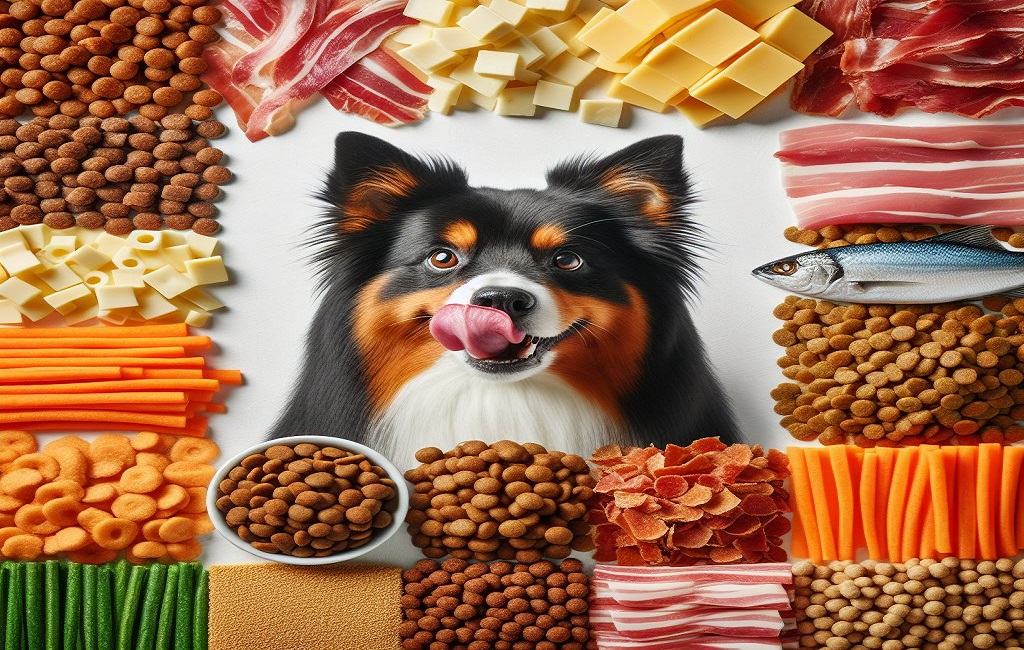
You can add coconut oil to your dog’s food or give it to them as a treat on its own. You can also put coconut oil on your dog’s skin and fur to help with skin problems or to keep them more moist.
Things to Keep in Mind
- Moderation is Key: Moderation is key with any new food you give your dog. If you eat too much coconut oil, you might gain weight and have upset stomach.
- Talk to Your Veterinarian: Before adding coconut oil to your dog’s food, talk to your vet if your dog already has a health problem or is taking medicine.
- Don’t Heat It Too Much: Melting coconut oil can make it easier to mix into food, but don’t heat it too much or it will lose some of its good qualities.
In conclusion, coconut oil is a natural product that is safe for dogs and is good for their health in many ways. The skin and hair health, nutrition, immune, joint health, and breath freshening can all be improved by giving your dog this vitamin in small amounts. But remember to slowly introduce new things to your dog, and if you have any worries about adding coconut oil to its diet, talk to your vet.
Broth
Animal bones and soft parts, like those from beef, chicken, or fish, are simmered to make bone broth, a healthy drink. People have been eating this traditional food for hundreds of years, but did you know that it can also be good for your pet? That’s right, bone soup is safe for dogs and also very good for them.
Bone soup is becoming more popular among pet owners because it is full of healthy nutrients. Calcium, magnesium, phosphorus, and potassium are just a few of the important chemicals that bones hold. Since these minerals are slowly cooked in water for hours, they get into the soup and are easily absorbed by both people and dogs.
Besides nutrients, bone soup also has gelatin and collagen in it. These two substances are very important for keeping joints healthy and gut health. Collagen makes bones and muscles stronger, and gelatin helps keep the joints lubricated. Because of these qualities, bone broth is a great addition for older dogs with joint problems or for young pups whose bones are still growing.
Also, when you make bone broth at home, you can change it to fit your dog’s special health needs. For example, you can make your dog feel better if you add ginger or turmeric to the soup if they have stomach problems. You can also add herbs like oregano or parsley to make it taste better and get extra antioxidants.
Bone soup is also good for you because it is easy on the digestive system. A lot of store-bought dog food has fillers and chemicals that are hard for dogs to digest. On the other hand, bone broth is a gentle and healthy food that can help settle an upset stomach or speed up the healing process after being sick.
To make bone broth at home, just put bones in a big pot of water, either raw or cooked, and add any herbs or veggies you like. Let it cook on low for at least 12 hours, then strain it and let it cool down before giving it to your dog. You can keep the soup in the fridge for up to a week or freeze it for longer.
To sum up, adding bone soup to your dog’s food is safe and good for them. It gives you important nutrients that help your joints and digestion and is easy on your stomach. You have control over the ingredients and can make it fit your dog’s needs when you make it at home. Find out from your vet if your dog already has any health problems before adding bone broth to their diet.
Potatoes sweet
In the past few years, sweet potatoes have become more famous as a healthy option to white potatoes. Do you know, though, that they can also be a safe and healthy treat for your pet? This part will talk about the good things about giving your dog sweet potatoes at mealtime.
First and foremost, sweet potatoes are full of important minerals and vitamins that are good for your dog’s health. They have a lot of beta-carotene, which the body turns into vitamin A to help keep your eyes healthy and your immune system strong. Also, sweet potatoes have a lot of fiber, vitamin C, B vitamins, and potassium, all of which are important for staying healthy.
Also, sweet potatoes have a lower glucose index (GI) than regular white potatoes. This means that they release energy more slowly, which makes them a great choice for dogs that have diabetes or trouble controlling their weight. The slow release of energy also makes your dog feel full longer, which makes them less likely to beg for bad treats.
Another good thing about giving your pet sweet potatoes is that they can help reduce inflammation. Anthocyanins, which are antioxidants found in these root veggies, have been linked to lowering chronic inflammation in dogs. As our dogs get older, inflammation can cause a lot of health issues, like arthritis and other joint illnesses. We can help keep these problems from happening by giving them foods that reduce inflammation, like sweet potatoes.
Also, the fiber in sweet potatoes helps digestion by encouraging the growth of good bugs in the gut. Common stomach problems in dogs, like constipation and diarrhea, can be helped by this. Furthermore, the fiber can help your dog keep a healthy weight by making them feel full and happy.
In general, dogs can eat sweet potatoes, but there are a few things you should know. It is important to feed them in moderation as part of a healthy diet. If you eat too much of any one food, it can make you sick or throw off your nutrients. Also, make sure the sweet potatoes are fully cooked before giving them to your dog. Dogs can have trouble digesting raw sweet potatoes.
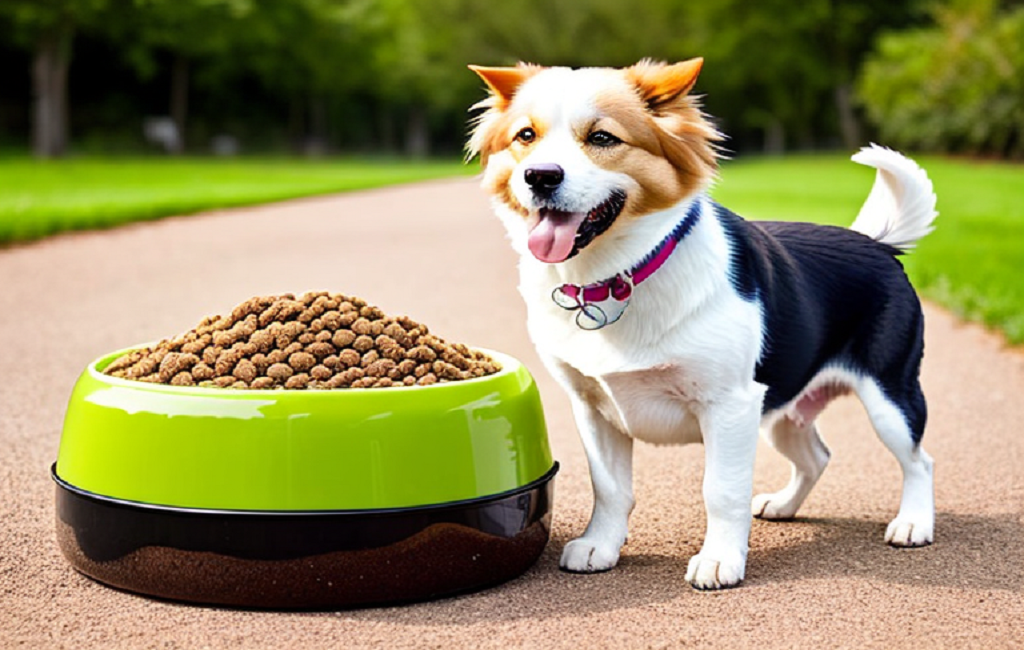
In conclusion, giving your dog sweet potatoes can be good for their health in many ways and are a great treat or addition to their normal meals. Remember that you should always talk to your vet before making big changes to your dog’s food.
Blueberry
Blueberries are a great superfood for people because they are full of minerals, vitamins, and antioxidants that are good for your health in many ways. Did you know, though, that these small, sweet berries are also good for our pets? Blueberries are safe for dogs to eat, and they’re also good for them.
First, blueberries are known to have a lot of antioxidants, like flavonoids and anthocyanins. Antioxidants help protect the body from free radicals, which can damage cells. Because these antioxidants are so strong, they can help reduce inflammation in the body and keep illnesses like cancer, arthritis, and heart disease from happening.
Blueberries also have a lot of vitamin C, which helps keep your defense system strong. This is especially good for older dogs whose immune systems may not be as strong or dogs that are getting better after being sick. Vitamin C also helps the body make more collagen, which is good for dogs’ skin and joints.
Dogs can keep their eyes healthy with the help of the important nutrients found in blueberries. Blueberries have a carotenoid chemical called lutein that may help keep dogs from getting cataracts and other eye problems.
Adding blueberries to your dog’s food is also a good idea because they are low in calories. This makes them a great treat for dogs that are overweight or have diabetes because they give them the nutrients they need without making them gain weight.
It’s important to note that the fiber in blueberries helps digestion by keeping the gut healthy and keeping bowel movements regular. This can be especially good for dogs that have trouble digesting food or are constipated.
Blueberries are usually safe for dogs, but you should only give them a small amount at a time. Because they are high in fiber, blueberries can make some dogs have diarrhea if they eat too many of them. To start, it’s best to give your dog a small amount. As time goes on, slowly increase the amount.
Blueberries are a safe and healthy food for dogs because they are full of antioxidants, vitamins, and fiber, all of which are good for your dog’s health. In addition, they are a great addition to a healthy food for our dogs. Just remember to always talk to your vet before making big changes to your pet’s food.
Leaf lettuce
Spinach might not be the first thing that comes to mind when you think of dog food, but this fresh green is safe and good for your pet. Actually, a lot of dog owners are surprised to learn that spinach is good for dogs in many ways.
First, let’s talk about how safe it is to give your dog veggies. Spinach is safe for dogs to eat, unlike some things that people eat, like chocolate or apples. Your dog can easily eat this healthy food as long as it is given in moderation and cooked correctly. But, as with any new food you give your dog, you should watch to see how they behave and look for any signs of stomach problems.
Now let’s talk about why giving your dog spinach in its food is good for it. Spinach has a lot of vitamins A, C, K, and B6. All of these are important for a dog’s immune system and general health. It also has minerals in it, like iron, calcium, potassium, and magnesium, which are good for your bones and muscles.
Spinach is also a great source of antioxidants, which help protect cells from damage and stop diseases that are linked to getting older or being in the wrong setting. These strong vitamins also help dogs’ eyes stay healthy by keeping them from getting cataracts and macular degeneration.
On the other hand, giving older dogs or dogs with joint problems spinach may help reduce inflammation because it has anti-inflammatory qualities. This can make it easier to move around and make you feel better when you do.
One more great thing about giving your dog broccoli is that it is high in fiber. Fiber is important for digestive health and can help dogs avoid having diarrhea or constipation. Just make sure to add spinach slowly so that you don’t have any stomach problems.
What’s the best way to cook spinach for your pet? The best way is to cook or warm it just a bit before giving it to your dog. This will help them break down the food and take in the nutrients better. It’s best not to give your dog raw spinach because it might be hard for them to digest and could make their stomach upset.
To add something healthy and full of nutrients to your dog’s food, you can also cook or steam some spinach and mix it in. But don’t give them too much—moderation is key when giving dogs spinach or any other human food.
To sum up, spinach can be a good addition to your dog’s food once in a while, as long as it is cooked correctly and given in small amounts. In addition to giving your dog important vitamins and minerals, it also has many other health benefits that can improve his or her general health.
Fish – Salmon
Salmon is a healthy and safe food that you can give your dog that comes from real people. Besides being tasty for people, this famous fish is also full of good nutrients that can help your animal friend.
Powerhouse of Protein:
Salmon is first and foremost a great energy source for dogs. Protein is an important part of keeping muscles strong and healthy, keeping skin and fur healthy, and growing and developing in general. About 20 grams of protein are in 3.5 ounces of cooked salmon, which makes it a great addition to your dog’s food.
Fats with omega-3s:
EPA (eicosapentaenoic acid) and DHA (docosahexaenoic acid) are two omega-3 fatty acids that salmon is known to have a lot of. These fatty acids are very important for your dog’s health because they help the body do many things, like reducing inflammation, improving joint health, supporting brain function and growth, and making the immune system stronger. Either way, omega-3s can help dogs with skin problems like rashes or itching.
Extra Minerals and Vitamins:
Salmon is good for dogs’ health because it has important vitamins and minerals as well as protein and omega-3s. It has a lot of B vitamins, like niacin, vitamin B6, and vitamin B12. These vitamins help your body turn food into energy and keep your skin healthy. Minerals like potassium, magnesium, and phosphorus found in salmon also help bones and muscles work well.

Easy to Break Down:
Dogs can handle salmon better than other types of meat because it is a lean source of energy. This is especially good for dogs whose bellies are sensitive or who are getting better after being sick.
How to Put Salmon on the Table:
Make sure the fish you give your dog is fully cooked and free of any bones before giving it to them. No spices or oils should be added to the fish when baking, cooking, or frying it because they are bad for dogs.
Also, make sure your dog doesn’t get too much salmon, since too much of anything can be bad. You should talk to your vet about how much salmon your dog should eat based on their age, weight, and state of health.
In conclusion, salmon is a healthy food for dogs as long as it is given in moderation. It’s good for your dog’s health because it has important nutrients like protein and omega-3 fatty acids. However, remember to always talk to your vet before making big changes to your dog’s food.
Recipes for your dog that use these human foods
People say that dogs are man’s best friend, but did you know that dogs like a lot of the same things that people do? According to research, giving your dog human food can improve their health in many ways and make their meals more fun. But keep in mind that not all things that people eat are good for dogs to eat. That’s why we’ve put together a list of tasty and healthy meals that use popular human foods that are good for your pet.
- Pumpkin Bites with Peanut Butter:
Peanut butter and pumpkin are two foods that dogs love, and this recipe turns them into a healthy treat that is full of vitamins and minerals. These bites can be kept in the fridge for up to two weeks in a container that doesn’t let air in.
- Dinner of chicken and rice:
People eat chicken and rice all the time, and your dog can too. It’s easy on their stomachs and gives them protein, carbs, and fiber. First, cook the boneless chicken breasts in water until they are done. Then, use two forks or your hands to break the chicken into small bits. Following the directions on the box, cook the brown rice and then add the shredded chicken. You can also add cooked veggies like peas, carrots, and green beans to make it taste better and be healthier.
- Cakes made with salmon and sweet potatoes:
Your dog can get a lot of energy, omega-3 fatty acids, and important vitamins from salmon. In a bowl, mix together 2 cups of cooked salmon (shredded or flaked), 1 cup of mashed sweet potato, 1 beaten egg, and 1/4 cup flour. Take a pan that has been greased and cook the patties for three to four minutes on each side over medium-low heat. Give it to your dog as a treat or mix it in with his standard food.
- Puppy Meatloaf:
This tasty meatloaf is made with lean ground beef, carrots, spinach, eggs, and other healthy foods to give your dog a complete meal. Warm your oven up to 375°F and use non-stick spray or olive oil to grease a loaf pan. 1. Grate one carrot, chop up one cup of spinach, and beat two eggs. 2. Put all of this in a large bowl. Place the dough into the loaf pan that has been prepared. Bake for 45 to 50 minutes, or until the bread is fully cooked. Let it cool down before cutting it up and giving it to your dog.
- Cheese and apple cupcakes:
Instead of regular dog treats, these pupcakes are a tasty and healthy choice. One grated apple, one cup of shredded cheddar cheese, one teaspoon of baking powder, one and a half cups of water should all be mixed together in a bowl until a thick batter forms. Put the batter into a muffin tin that has been greased. Bake at 375°F for 20 to 25 minutes, or until the top is lightly browned. These pupcakes can be kept in the fridge for up to a week in a container that doesn’t let air in.
Before making any changes to your dog’s food, you should always talk to your vet. These foods are generally safe for dogs to eat, but you should only give them small amounts at first and watch out for any food allergies or sensitivities your dog might have. That being said, treats shouldn’t make up more than 10% of your dog’s daily calories.
You can give your dog nutrient-dense human foods while still making their taste buds happy with these tasty recipes. Have fun cooking!
How to Introduce Something
It can be fun and rewarding for both you and your dog to try new foods. Before you start giving your dog new foods, you should be very careful and follow some rules to make sure it is safe and healthy for them. Here are some tips to help you successfully give your dog new foods that people eat:
- Do things slowly. Dogs may have different food preferences, just like people do. When introducing new foods, it’s best to do it slowly. Start with small amounts and slowly increase them over time. This gives your dog’s digestive system time to get used to the new food and keeps his stomach from getting upset.

- Think About Your Dog’s Age and Health: You should think about your dog’s age and health before giving it any new food. Dogs that are puppies or older may have special dietary needs that you should think about before giving them new foods. Before giving your dog any new foods, you should also talk to your vet if your dog already has any health problems, like allergies or stomach problems.
- Look into the food. Dogs shouldn’t eat all human foods; some can even be poisonous or dangerous. If you want to give your dog something new, find out first if it is safe for them. Lean meats (like chicken and turkey), vegetables (like carrots and green beans), fruits (like apples), and grains (like rice) are all safe for dogs to eat.
- Cook Foods All the Way Through: Meat, eggs, and fish that are raw or barely cooked can contain bacteria that are bad for dogs and can make them sick. Make sure that any new foods you give your dog are fully cooked before giving them to them to avoid any health risks.
- Avoid Foods That Could Be Dangerous: Chocolate, onions, garlic, grapes, raisins, avocados, and macadamia nuts are all human foods that should never be given to dogs. Dogs can get sick or even die from eating these things.
- Watch How Your Dog Reacts: When you give your dog a new food, it’s important to keep a close eye on how they react. If you see symptoms like vomiting, diarrhea, itching, or licking too much, it could mean that your pet has an allergy or intolerance. If any of these things happen, you should stop giving your pet the new food and talk to your vet.
- Use Treats for Training: Giving your dog treats when you introduce new foods is a great way to get them excited about trying something new and also use positive reinforcement for training. Make sure the new food you give them as a treat during training sessions is small enough that it doesn’t get in the way of their regular meals.
- Feed your dog a balanced diet. Keep in mind that dogs have different nutritional needs than people. Even though it’s good to give them new foods and treats, make sure they are still getting all the nutrients they need from a balanced diet. Talk to your vet about how to best add new foods to your dog’s regular diet.
- Pay Attention to Portions: When you introduce new foods, pay attention to the portions. Too much of a new food at once can make your stomach upset or make you gain weight. Make sure to change their regular meals to account for the extra calories that the new food may have.
- Make Changes Gradually: If you want to feed your dog a new human food on a regular basis, do it slowly over a few weeks so their digestive system has time to get used to it. This will also help you keep an eye out for any possible bad reactions.
Keep in mind that every dog is unique and may have different food preferences and needs. Remember to pay attention to what your dog needs and talk to a vet if you’re worried about giving them new foods. With these tips in mind, you can safely and successfully add new human foods to your dog’s diet, which could help them try new foods!
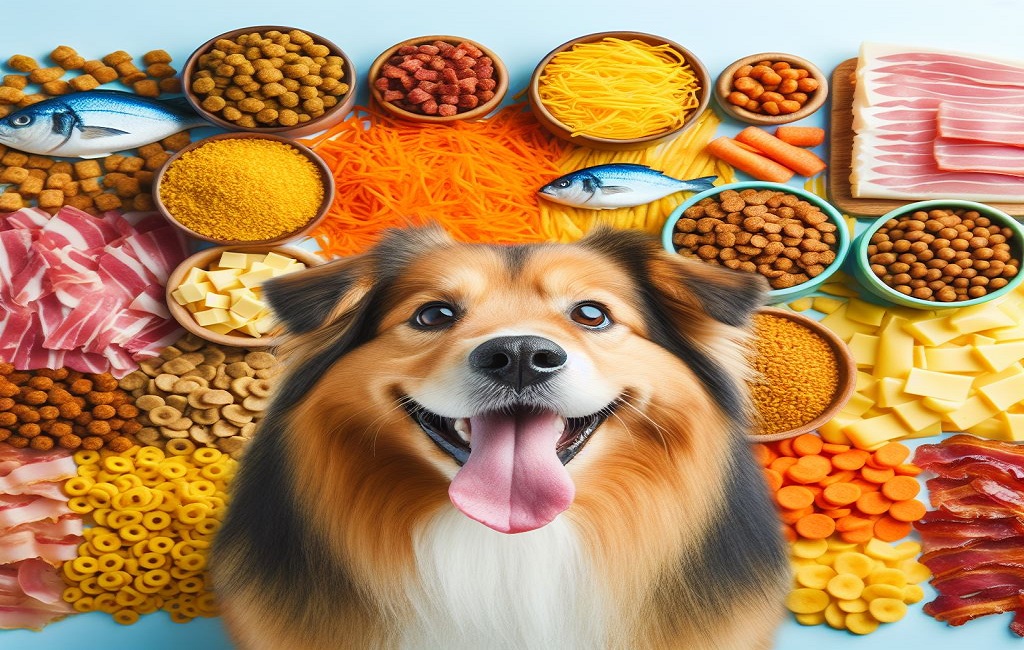
1 thought on “7 surprising food trends for people that is safe for dog”